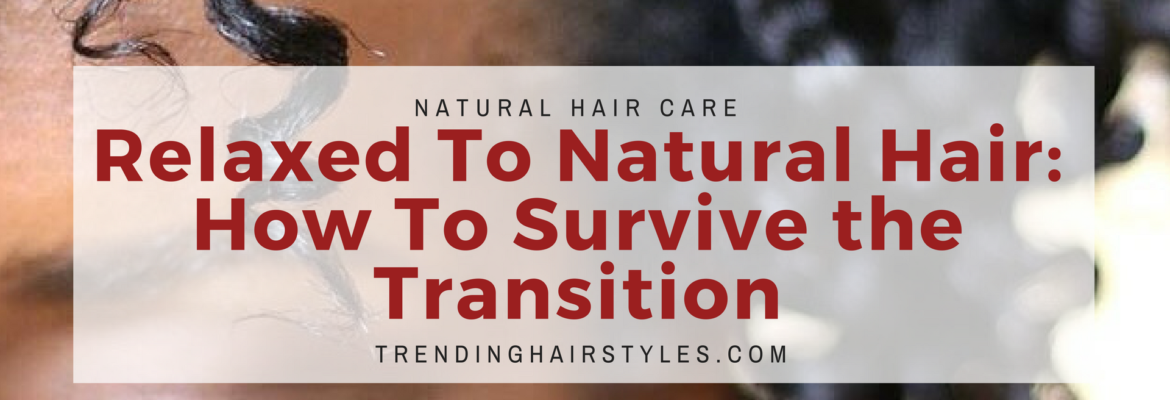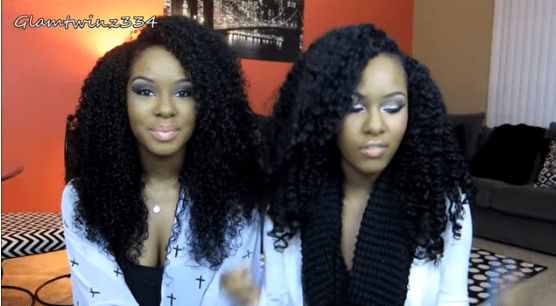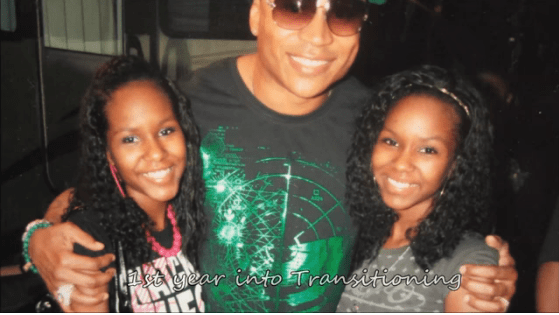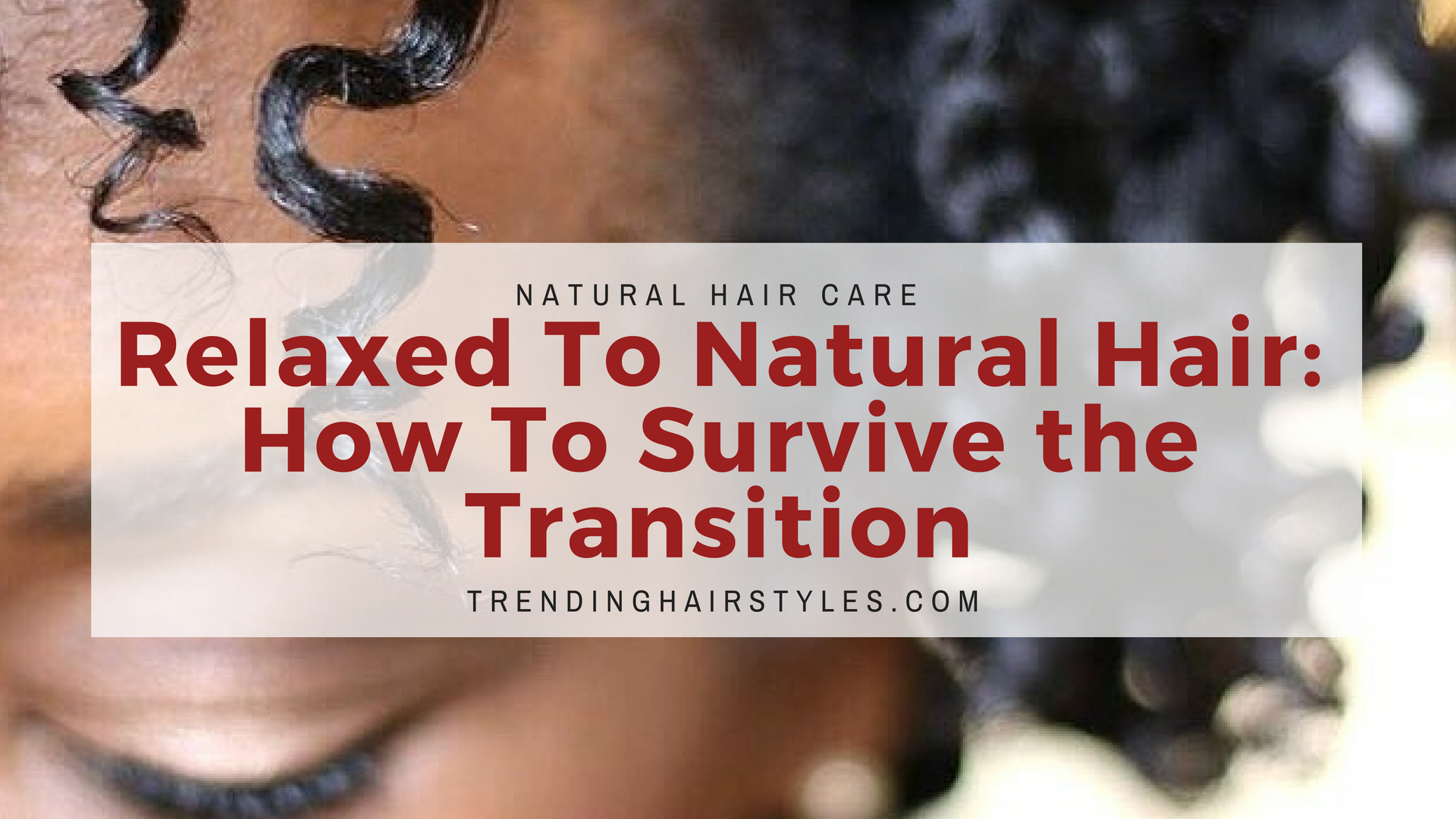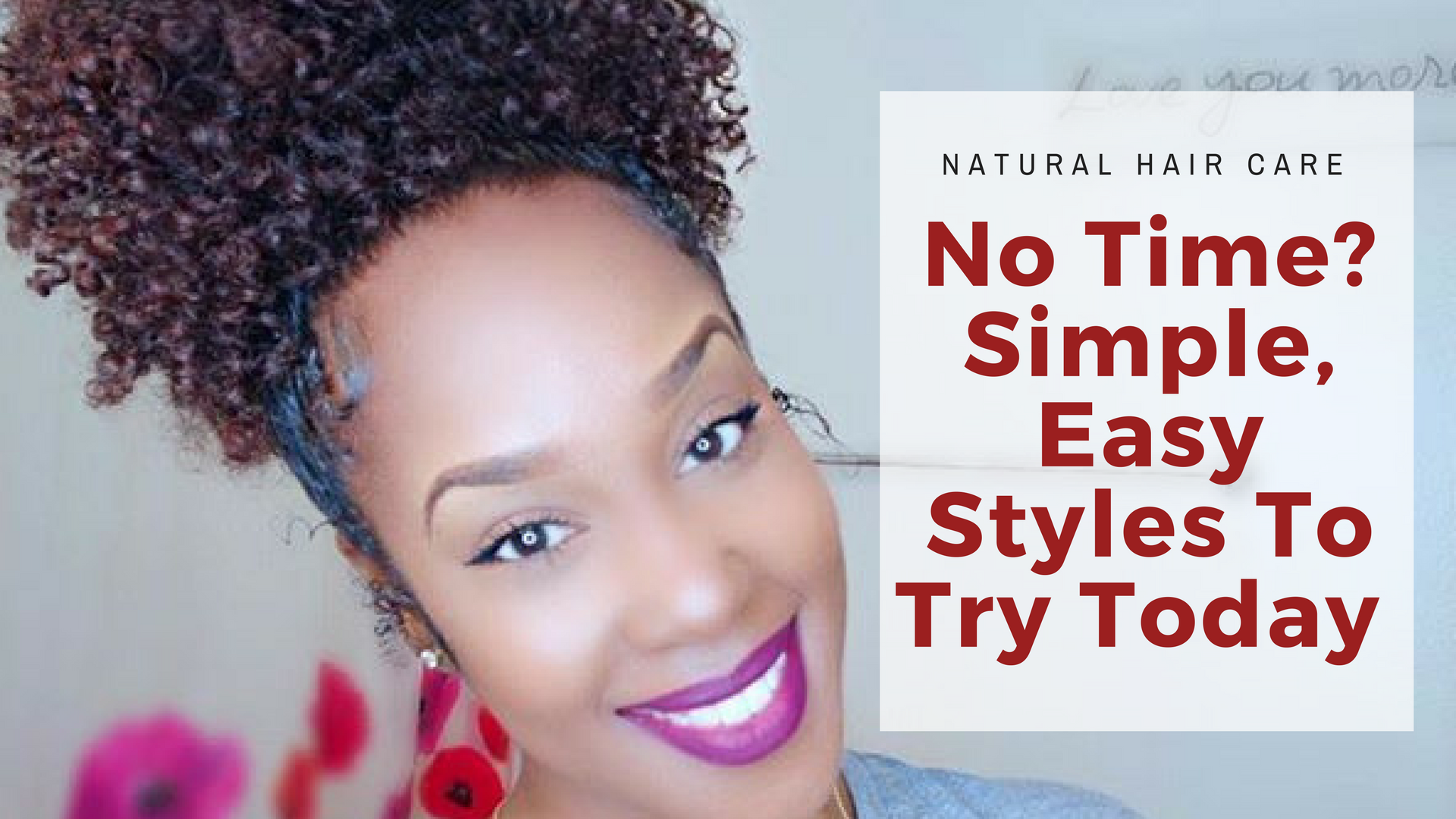Transitioning Hair: Relaxed to Natural – How To, Tips, Rules, Products
Transitioning Hair From Relaxed to Natural Hair. If you are considering transitioning from relaxed to natural hair and don’t know where to start and how to manage your transitioning hair, you are in the right place. One reason way many women never give of the chemicals and the processed hair is their worry over styling and managing transitioning hair. And yes, it does require special attention. But it’s not overwhelming. Many of us have already done it and are here to help guide you through the process.
Transitioning Hair : From Relaxed to Natural Video Tutorial
Video Credit: glamtwinz334
1. The First thing you need to consider when you decide to lay off them chemicals is what hair products you need to manage your transitioning hair. This will mean that you will have to go out and buy new products for natural hair. You don’t have to make the purchase right away.
Finish off your old hair products first. After all it is your processed hair that you will be taking care of for a while before you start seeing noticeable new growth. Use this time to research the new products you’ll need to care for your transitioning hair.
2. Once your usual hair products start finishing you can start purchasing new products for your hair but it is best if you introduce them one at a time. This way you can really tell what the product does to your hair so you can easily determine which product is no and which are winners.
3. Once your natural hair starts growing out you want to take extra care with the line of demarcation. This is where your natural hair meets your processed hair. This section of your hair is very fragile and most susceptible to breakage so you have to be gentle with your transitioning hair and take the best care of it that you can.
4. You should not try to guess your curl pattern the minute you start seeing some natural hair. The truth is that when you are transitioning from relaxed to natural hair wit will be hard for you to see the true curl pattern of your hair until you have completely gotten rid of the processed ends and grown out all of your transitioning hair.
5. A very important part of the process of transitioning from relaxed to natural hair is deep conditioning and additionally deep conditioning with a little heat if you have the time. One of the first product investments you make could ideally be a good deep conditioner as this is something you will want to use every week.
6. Though you will have two different textures of hair for a while you still want to treat all your hair as natural hair. This way you get a lot of practice for when it truly is all natural. Now is a great time to practice different styles such as Bantu knots, braid outs and twist outs. This ensures that you master the styles by the time all your hair is natural. Remember to be careful with your transitioning hair. It is still fragile.
7. Keep Your Scalp Clean – The key to hair growth is a clean and healthy scalp. Remember, how your mom used to grease your scalp with grease? Well, forget that. Unless you want to clog your hair follicle. Since your scalp creates a natural hair sebum, its not necessary. But if you like to, you can massage your scalp with castor oil or a light oil such as Jojoba Oil, but avoid mineral oil. Wash your scalp and hair whenever you see buildup, since that buildup will stunt your hair growth.
8. Trim Your Ends – Contrary to popular belief trimming your ends won’t make your transitioning hair grow faster. But it will prevent excessive breakage. This is especially important during the transition. On a regular basis, trim off split ends. Since you don’t plan on keeping the relaxed ends anyway, this is a great opportunity to trim away at those ends.
Note: You can trim as often as every 6 weeks or 3 months until you’re completely natural.
9. Protect Your Hair Strands – Do your best to protect your hair. Don’t over-manipulate your hair. Deep condition. Utilize protective styles — as long as they are not too tight or left in too long. Since your hair is fragile right now, it is especially important to protect it from damage. If your goal is length retention, then you might as well practice now since this is key.
10. You’ll Know When It’s Time to Big Chop – One of the top questions asked is when will you know it’s time to big chop. Trust me. You’ll know. You will reach a point when you’re tired of dealing with two textures. Or you will be anxious to see your natural hair in all it’s glory.
On the spur of the moment, I called my hair stylist when I was leaving work. She squeezed me in and chopped it off. I never looked back.
You Might Also Like These Articles:
image sources
- TH Cover Images (75): https://youtu.be/87kMMoRRObM

